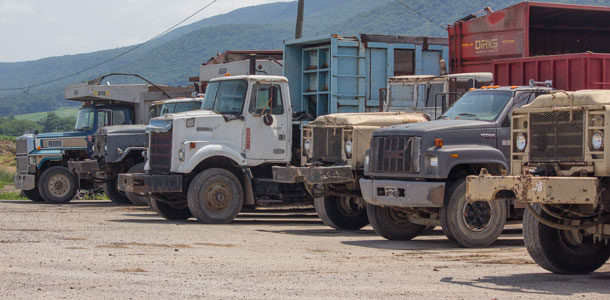July 2, 2014, a 63-year-old Kingsport man is electrocuted while unloading grain into a silo in McMinn County, Tennessee. His truck caught fire almost immediately afterwards. No one could save him. Unfortunately, these news stories occur all too frequently, especially in the agriculture industry.
Producers often work in potentially hazardous electrical situations. However, there are several precautions you can take to help prevent your operation from making the next headline.
General guidelines
- Educate all workers on the safety procedures. If some equipment requires special directions, inform employees then post them on or near that equipment.
- Never work with electricity in a wet or damp environment.
- Wear the necessary personal protective equipment (PPE) for every task.
- Use the correct tool or cord for the job. Don’t modify them.
- Use tools and equipment that are either double insulated or have a third ground prong.
- Check extension cords before beginning work to make sure they’re the right size and rating for the job.
- Always pull the plug, not the cord.
- Never remove the third ground prong on a cord.
- Always de-energize tools and equipment before inspecting or working on them.
- Replace equipment with exposed, damaged or frayed wires.
- Tag tools and equipment in need of repair so no one else tries to use them.
- Have a certified electrician make electrical repairs.
- Install ground-fault circuit interrupters (GFCI).
- Use a lock out tag out (LOTO) system to handle electric shutoffs. Under this system, every employee permitted to shut down a power source has his own lock and key. When he shuts off a power source, he should put a tag and his lock on it to ensure that no one else accidentally turns the power source back on before the work is done. The tag should contain a brief record of this.
- Use non-conductive ladders when working around power lines.
Power lines
Power lines are usually unprotected, making them especially dangerous. The National Electrical Safety Code (NESC) requires them to either be buried or at least 18 feet above the highest point on a grain bin where portable filling equipment is used. It is also recommended that all power lines be at least 10 feet above the highest point of the tallest piece of equipment on the property.
Keep in mind that some equipment is taller during transport than when it’s in use. Ask the local utility company to measure the power lines for you, never measure them yourself.
If you must work around underground or overhead power lines, contact the local utility company and have them shut off the power lines before you begin work. Use employees who are trained to work around power lines to perform the task. Additionally, keep trees around power lines trimmed. Trees in contact with power lines can become conductors and pose potential risks.
If you’re on a tractor in contact with a power line, stay on the tractor and call for help. Have someone contact the utility company and emergency personnel immediately. While in the tractor, you aren’t part of the circuit.
However, if the tractor catches on fire or some other immediate danger occurs, jump as far from the tractor as possible. Avoid touching the tractor and land with both feet on the ground at the same time to help prevent you from becoming part of the circuit. Continue hopping away from the tractor, always moving both feet at the same time until you are roughly 50 feet away from the power source to ensure you don’t become part of the circuit.
Never return to the tractor once you have jumped out of it. Just because you were able to get out safely doesn’t mean the tractor isn’t electrically charged.
If you see a tractor or other farm equipment in contact with a power line, contact the local utility company and emergency personnel immediately. Stay at least 50 feet away from the accident. You may be shocked if you move closer.
Emergency situations
- Call 911 or an emergency number immediately if an electrocuted individual shows signs of cardiac arrest, arrhythmias, respiratory failure, muscle pain or contractions, burns, seizures, numbness and tingling, or unconsciousness.
- Check to make sure they are no longer connected to the power source before you touch them, otherwise you may also become part of the circuit. If they are part of the circuit, use something dry and non-conductible to move them. Wood, plastic and cardboard are non-conductors. Power-line related accidents are the exception.
- Unplug equipment or turn it off at the control panel.
- Don’t move them unless absolutely necessary.
- Elevate legs slightly and cover them with a blanket to help prevent shock.
- Begin CPR if necessary.
Electricity is a highly dangerous, although useful, tool. Many emergency situations can be avoided if the proper precautions are taken. Treat electricity with the respect it requires so you, your loved ones or your employees don’t become the next electrical emergency. FG
Read a related article: "Safety: farmers 'heart smart'."
PHOTO
Unfortunately, low electrical lines are a common site on farms. A 10-foot clearance is recommended for all power lines above the highest point of the tallest piece of equipment on the property. (And remember, some equipment is taller during transport than when in use.) Photo by FG staff.












